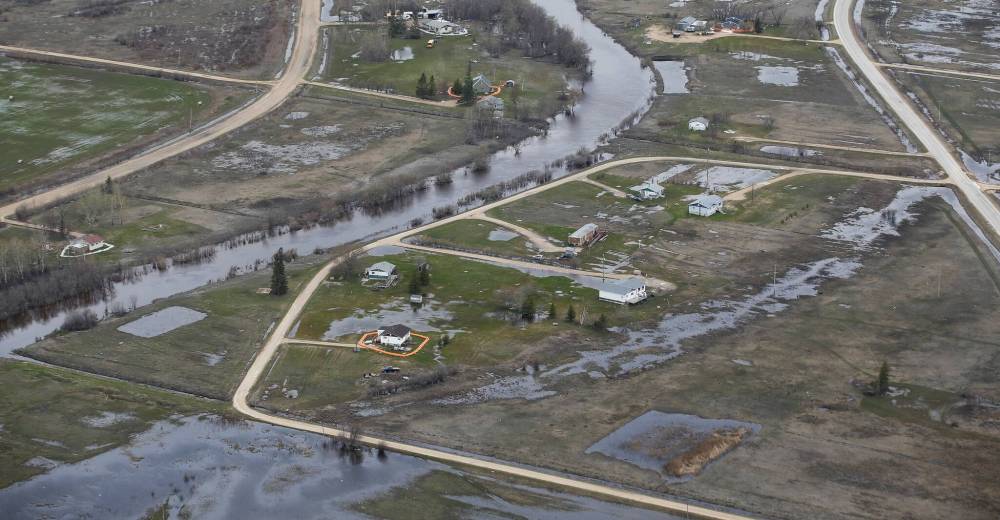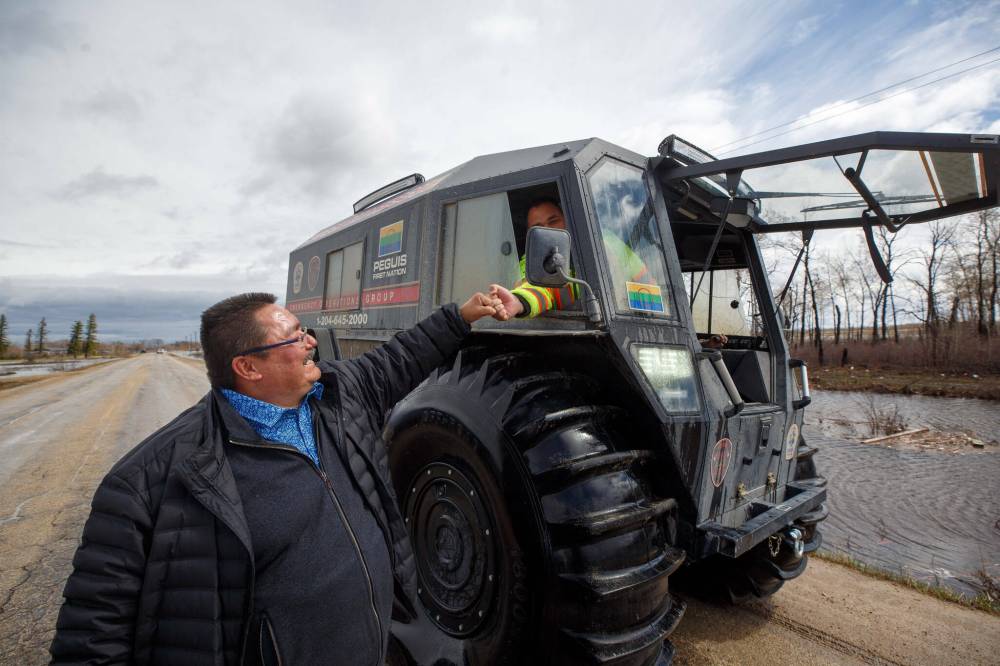First Nations call on governments in current, future flood fight
Advertisement
Read this article for free:
or
Already have an account? Log in here »
To continue reading, please subscribe:
Monthly Digital Subscription
$0 for the first 4 weeks*
- Enjoy unlimited reading on winnipegfreepress.com
- Read the E-Edition, our digital replica newspaper
- Access News Break, our award-winning app
- Play interactive puzzles
*No charge for 4 weeks then price increases to the regular rate of $19.00 plus GST every four weeks. Offer available to new and qualified returning subscribers only. Cancel any time.
Monthly Digital Subscription
$4.75/week*
- Enjoy unlimited reading on winnipegfreepress.com
- Read the E-Edition, our digital replica newspaper
- Access News Break, our award-winning app
- Play interactive puzzles
*Billed as $19 plus GST every four weeks. Cancel any time.
To continue reading, please subscribe:
Add Free Press access to your Brandon Sun subscription for only an additional
$1 for the first 4 weeks*
*Your next subscription payment will increase by $1.00 and you will be charged $16.99 plus GST for four weeks. After four weeks, your payment will increase to $23.99 plus GST every four weeks.
Read unlimited articles for free today:
or
Already have an account? Log in here »
Hey there, time traveller!
This article was published 01/06/2022 (1289 days ago), so information in it may no longer be current.
The worst flood in the history of Peguis First Nation has become even more dangerous amid the recent downpour.
Most of Manitoba was drenched with between 30 to 60 millimetres of rain May 30-31, with strong winds gusting over 100 km/h in some areas. The storm caused tree damage and power outages, and brought even more flooding to low-lying areas.
About 2,000 Peguis residents are already in their fourth week away from home since emergency evacuations began in the community some 200 kilometres north of Winnipeg. Those who remained — approximately 1,500 — encountered washed-out roads and had to rebuild local dams.

“We continue to be not only in recovery mode but in response (mode) for certain houses,” Chief Glenn Hudson said Wednesday.
Sixteen First Nations in Manitoba, including Peguis, have needed emergency help dealing with floods this spring. They’re calling on levels of government to work together on prevention instead of responding to regular, repeated evacuations.
“I think we’ll get more accomplished working together,” Assembly of Manitoba Chiefs acting grand chief Cornell McLean said.
Many Interlake region communities have been hit hard with flooding on a nearly annual basis and climate change “is here to stay,” McLean said.
He said AMC wants to work with the federal and provincial governments on flood prevention measures such as new dikes and clearing culverts and ice jams before flood season begins. It makes more sense to be proactive rather than pay for recovery efforts every year, he said.
McLean said the province has so far not responded to such requests.
“They always point the finger back; it’s federal responsibility. Meanwhile, the treaties go as far as the shoreline, they don’t go on to the lake, as I’m told. So it’s provincial responsibility. It’s their waters that are flooding us.”
Meantime, Peguis has been working with the federal government and the Red Cross, and has not officially requested emergency help from the province, Hudson said.
He said a long-term flood protection strategy is necessary — one that includes First Nations communities in the construction of retention ponds and diversion. Peguis is seeking long-term support from Ottawa and has so far had 170 homes assessed as unlivable, due to this season’s flooding.
Evacuees are staying in hotels in Winnipeg, Brandon and Selkirk, and there’s increased risk of people experiencing substance abuse, domestic violence and racism while they’re temporarily housed, McLean said.
“It’s very stressful. We’ve had people that have passed away; we had a young lady that overdosed in one of the hotels,” Hudson said. “This has had a dramatic effect — actually, a traumatic effect — on a lot of people.”

The provincial government stated 23 municipalities and 12 First Nations communities have requested provincial help due to flooding. A spokesperson said Manitoba is working with the federal government on the response in First Nations communities, but didn’t provide details on long-term flood prevention projects.
“Unfortunately, this flooding event is still underway and the focus of the provincial government is responding to the unfolding needs of Manitobans, their communities, and their flood-fighting infrastructure,” a spokesperson stated in an email.
“Manitoba continues to work with federal agencies supporting the response to flooding on First Nations.”
The Colorado low weather system that brought the most-recent rain to Manitoba travelled up to northern parts of the province Wednesday. It is expected to head south again Thursday, meaning more rain is in the forecast.
The storm system is also projected to head east toward Ontario, said Natalie Hasell, a warning preparedness meteorologist with Environment and Climate Change Canada.
After Thursday, she said, “we should see several days of sunnier, drier conditions.”
katie.may@freepress.mb.ca

Katie May is a general-assignment reporter for the Free Press.
Our newsroom depends on a growing audience of readers to power our journalism. If you are not a paid reader, please consider becoming a subscriber.
Our newsroom depends on its audience of readers to power our journalism. Thank you for your support.


